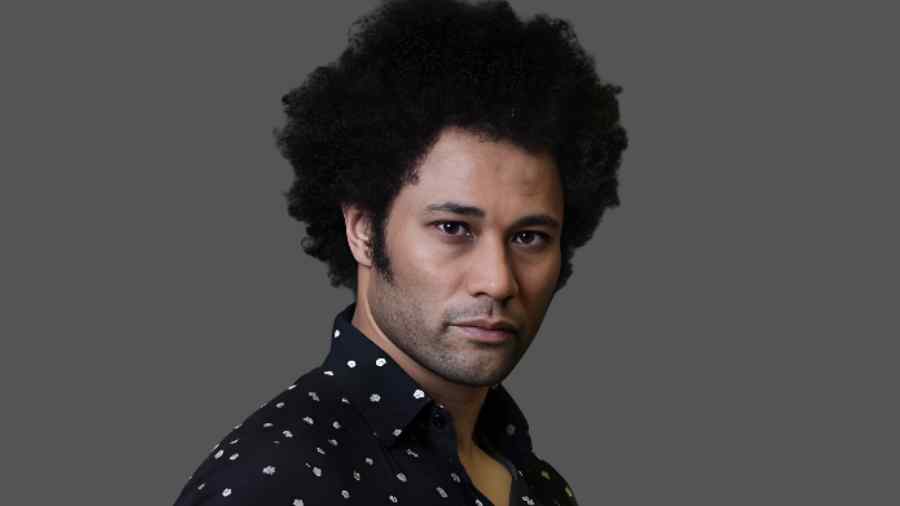Laurence Westgaph: A Deep Dive into the Historian’s Legacy and Allegations

Laurence Westgaph is a name that evokes both admiration and controversy in the cultural and academic circles of the United Kingdom, especially in Liverpool. Born in 1975 and raised in Toxteth, Liverpool, Westgaph grew up navigating a multicultural identity. He is of Nigerian and Jamaican descent, and his early life in Liverpool shaped many of his later intellectual and political interests.
Westgaph’s public persona is that of historian, lecturer, activist and broadcaster. Over the years he has taken on roles that position him at the crossroads of heritage, race, public education and social justice. His visible presence in Liverpool’s cultural life—through walking tours, talks, media appearances, and his association with organisations like the Liverpool Black History Research Group—has made him a figure of influence in discussions about how the city engages with its Black history and the legacy of the transatlantic slave trade.
Intellectual and Public Contributions
Work in Historical Interpretation and Public Education
Westgaph has played a visible role in communicating history to the public, particularly Liverpool’s Black heritage and the city’s connections to slavery. He has led walking tours, lectured widely, participated in documentaries, and worked with cultural institutions to open up conversations about memory, race, and identity.
His role has often been to act as a bridge: bringing historical scholarship into everyday public awareness and engaging communities in understanding how histories of oppression remain present today. Many supporters have praised his charisma, his ability to tell difficult histories in accessible ways, and his passion for social justice.
Institutional Roles and Partnerships
One of his more formal roles was as Historian in Residence at National Museums Liverpool (NML), beginning in August 2020. In that capacity, Westgaph was expected to support the museums in their efforts to become more inclusive and to engage with anti-racism policies and practices. He was also associated with the museums’ “RESPECT” advisory group, which aimed to advise on representation and equity from a Black British perspective.
In addition, his leadership or founding role in the Liverpool Black History Research Group has linked him to community-driven heritage work, often overlapping with institutional and civic projects like Liverpool’s waterfront redevelopment and cultural regeneration.
Many found in him a compelling voice: a historian not confined to academic jargon, but deeply engaged in activism, education, and shaping public memory.
Known Criminal Convictions and Historical Legal Matters
Any discussion of Laurence Westgaph must acknowledge his known criminal record, which has been publicly documented. These convictions form part of the context in which the more recent allegations are weighed.
In 2000, Westgaph was convicted of having sex with a 15-year-old girl. His defence claimed the girl “gave every impression” of being older. The result was a community order, not a prison sentence.
In 2008, he was convicted of causing grievous bodily harm following a violent incident in the home of a former partner. He had broken into the property and assaulted a man whom he found inside. He received a suspended sentence for that offence.
Under UK law, some convictions may become “spent” under the Rehabilitation of Offenders Act after a period of time, meaning they do not have to be disclosed in certain circumstances. However, if roles involve working with vulnerable individuals such as children, previous convictions (even spent ones) may need to be disclosed or considered. How that legal framework applied to his roles at the museums is a subject of scrutiny.
Emerging Allegations of Abuse, Coercion and Institutional Failures
What the Allegations Say
From 2024 into 2025, investigative reporting has surfaced multiple troubling accounts from women who claim that Westgaph engaged in patterns of abuse, coercion, stalking and sexual misconduct. Their claims, based on interviews, messages, documents, and first-hand testimonies, suggest that over the course of decades he created a pattern of behaviour directed particularly at women with whom he had intimate or romantic relationships.
Some of the recurring claims are emotional manipulation, isolation from friends or family, demeaning remarks and controlling behaviour. Several reports describe sexual coercion during intimate encounters, harassment, stalking-like behaviour, and intrusive monitoring. In professional settings, some women allege he touched female colleagues inappropriately or invaded personal space, making them uncomfortable.
One woman, referred to as “Millie,” described a relationship that began with adoration and surprise gestures, which she says evolved into a constricting relationship where she felt trapped, degraded, and terrified. Another former partner, “Elizabeth,” recounts being belittled about her looks, threatened verbally, and manipulated over years. Both describe feeling traumatised long after leaving the relationship.
Institutional Awareness and Response
One of the central controversies is what National Museums Liverpool (NML) and other institutions knew—or should have known—when they engaged Westgaph in a prominent role. Critics argue that NML ignored or dismissed warnings about his conduct, failed to apply rigorous safeguarding protocols, and missed red flags regarding his behaviour.
Staff at NML say they were told about his appointment only after it was announced publicly, leaving little time to conduct internal checks. Former employees claim some staff raised concerns about his behaviour in the workplace, including unwanted contact, but that these reports did not lead to formal complaints. Because he was hired as a freelance contractor, there is debate over whether enhanced DBS checks were required.
When private warnings were sent via social media about alleged misconduct, some messages reportedly went unanswered. In 2025, under public pressure, NML announced that it had engaged an independent third party (BRAP) to investigate how it applied internal policies in relation to Westgaph’s appointment and conduct. The museum has maintained that, prior to recent reports, it had not received formal complaints. It also admitted awareness of his “spent convictions” but denied prior knowledge of the new allegations.
The broader question now facing cultural institutions is one of responsibility and due diligence. To what extent should organisations conduct background checks and act on informal warnings when appointing individuals to influential public roles?
Legal Threats, Pushback and Media Confrontation
As the allegations gained traction, Westgaph and his legal team responded with denials and attempts to counter the reports. He claims the allegations are vague, unsubstantiated and motivated by malice from former partners. He has stated publicly that he is willing to cooperate with police if contacted.
In mid 2025, The Post, a local investigative outlet, reported that Westgaph had threatened High Court action to force retractions. The Post refused to retract its work, asserting that its investigation was based on multiple corroborated sources. It accused Westgaph of attempting to intimidate sources and staff through legal threats and subject access requests.
Reports indicate he has made legal challenges or threats not only to the media but potentially to cultural institutions. The outcomes of these actions are not yet known.
Reputation, Influence and Public Reaction
Observers point out the striking contrast between Westgaph’s status as an anti-racism advocate and the serious accusations against him. For years, he was considered a key voice in shaping how Liverpool confronts its colonial and slavery-linked past. Many supporters credit him for elevating Black heritage and holding institutions accountable for their own histories.
However, the growing number of allegations has divided opinion. Some community members continue to defend his work and stress the importance of not dismissing a man who has contributed to social justice. Others argue that defending him ignores the seriousness of the women’s accounts. For many, the issue is not just his personal conduct but also how institutions enabled and protected him.
Women who have spoken out describe feelings of fear and isolation, compounded by the disbelief they expect from a society that often dismisses abuse allegations against powerful men. They say that speaking out was a way to reclaim agency and to prevent others from being harmed.
Current Status and Developments
As of 2025, Laurence Westgaph’s contract as Historian in Residence with National Museums Liverpool has ended. The museum has confirmed that it commissioned an independent review into its safeguarding policies and handling of the case. The outcome of this review has not yet been made public.
Media outlets, particularly The Post, continue to investigate and report on related developments despite facing legal pressure. As of the latest updates, Westgaph has not been charged with new criminal offences, though police have reportedly been made aware of the allegations. His lawyers maintain that he denies all claims of abuse.
The cultural sector, meanwhile, has entered a phase of reflection. Institutions are examining how they vet individuals for roles involving public engagement, how they handle informal warnings, and how they balance inclusion with accountability.
Lessons and Broader Implications
The Laurence Westgaph case carries implications far beyond one man or one institution. It has prompted discussions about safeguarding, accountability, power, and the responsibilities of public organisations.
Safeguarding and Due Diligence
Museums and cultural institutions must ensure that thorough background checks are conducted for all individuals, especially those in positions involving community engagement or youth contact. Relying solely on legal definitions of “spent” convictions can create loopholes that undermine safety and trust.
Power and Public Persona
The case also underscores how charisma and public activism can mask harmful behaviour. Westgaph’s public image as a champion of justice may have discouraged scrutiny. The combination of moral authority and institutional endorsement can make it harder for victims to be believed.
The Role of Journalism
Investigative journalism has been central to revealing this story. Reporters who exposed the allegations have faced significant risks, yet their work has brought transparency where silence might otherwise have prevailed. The case is a reminder of the importance of a free press in uncovering power abuse.
Impact on Survivors
For survivors, the process of coming forward has been painful but transformative. Their voices have pushed institutions to confront difficult truths and review their policies. The courage of these women has inspired conversations about emotional abuse, manipulation, and how to recognise patterns of coercive control.
Conclusion
Laurence Westgaph remains a complex and controversial figure in British public life. His work in exposing Liverpool’s ties to slavery and promoting Black history cannot be ignored, yet the allegations of abuse and institutional negligence demand accountability. The unfolding investigation represents a critical moment for cultural institutions in the UK.
It challenges society to ask difficult questions about how far reputations, activism, or past contributions can go in shielding someone from scrutiny. It also highlights the urgent need for transparent safeguarding, survivor support, and media freedom. Whatever the final outcome, the Laurence Westgaph case will likely serve as a defining example of how institutions and communities navigate the intersection of legacy, power, and justice in modern Britain.



